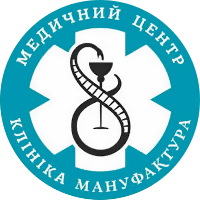Computerized spinal traction
Spinal traction is a series of effects dosed in terms of force and time - stretching and weakening - of the spine, it is a highly effective method of spinal decompression therapy, which has both an immediate pain-relieving and a long-term therapeutic effect on areas of degenerative and compressive lesions of the spine. The main effect of stretching is the decompression of anatomical structures which are: the increasing of intervertebral and interarticular distances, the expansion of intervertebral openings, the unloading of vertebral-motor segments, the reduction of intradiscal pressure and the unlocking of intervertebral joints. Traction has proven itself as a preventive measure for spine diseases and is indicated for use both with sufficient physical activity and for people with a sedentary lifestyle when the first signs of osteochondrosis appear.
A short-term or a long-term tractions help to overcome the muscle spasm and to eliminate the displacement of vertebrae and deformation of the spinal column. At a constant stretching the vertebral column is lengthened in a certain place and kept in the desired position with possible subsequent fixation with a special corset.
Depending on the rhythm of exposure, continuous, intermittent and cyclic tractions are performed. Continuous traction mainly has a decompression effect is conducted as one-moment traction. Intermittent tractions are conducted with gradually increasing tractions, their maximum level is kept for several minutes, and then the traction gradually decreases, until complete relaxation. Intermittent traction is more effective than continuous, and the effect on the patient is less sharp and intense.
At the cyclic traction stretching is performed for several periods (the strength of traction also varies) which are then replaced by rapid relaxation, that is creating a certain rhythm of stretching. Along with the positive effect on the bones, joints and ligaments the cyclic traction selectively affects the level of deep muscles, contributing to the improvement of blood circulation. The harmonically pulsating tension trasmits all active force into a pleasant pulsating vibration.
Spinal traction is set by a computer program with full therapy control that can be seen on the display. This allows a physision to carry out procedures with high accuracy as the computer constantly checks the data gotten.
Here in "Manufactura" clinic we condact spinal tractions on the "Ormed Traktion" spine decompression table performing a dry impulse spine and large joints extraction under computer control of the dynamics and force of extraction, deep warming for greater efficiency and relaxation during extraction. We carry out traction of the cervical, thoracic, lumbar spine, as well as traction of the joints of the limbs.
Indications for spinal traction
- Acute and subacute pain syndrome arises as a result of compression
- Neurodystrophic processes like: osteochondrosis, spondyloperiarthrosis, ligamentosis, spondylosis, with pronounced pain syndrome and/or hypertension
- Protrusions and intervertebral hernias
- Neurovascular and neurotrophic disorders
- Reflex muscle-tonic pain
- Pseudospondylolisthesis
- Radiculoischemic syndromes with slow progress
- Pathological myofixation of the back erector muscle
Contraindications to spinal traction
- Acute stage of vertebrogenic disease
- Violation of blood circulation in the spinal cord
- Infectious diseases of the brain/spinal cord membranes
- Vertebral instability
- Spinal cord compression syndrome
- Herniated discs with the loss of elements into the spinal canal lumen
- Scoliosis in childhood
- Congenital and acquired deformations of vertebrae
- Systemic diseases of bone tissue (osteoporosis, myeloma, etc.)
- Decompensated hypertensive disease
- Severe heart and/or lung failure
- Infectious diseases
- Acute diseases of the gastrointestinal tract
- Pregnancy
- Exacerbation of mental illnesses
- Tumors and metastasis
- A pronounced negative reaction to trial traction
How spinal traction is performed
The procedure necessarily begins with a test pulls for 3 minutes. The duration of therapeutic procedure is 10-25 minutes, and the course of treatment depends on the diagnosis. For example, protrusions can be corrected in a course of 6-7 sessions, while intervertebral hernias are cured through several series of 10-15 procedures, over 3-4 months. After the stretching procedure, the patient must remain in a horizontal position for 30-45 minutes or be fixed with a special corset.
Make an appointment
Your name
Phone number
Direction
Desired date
Comment










